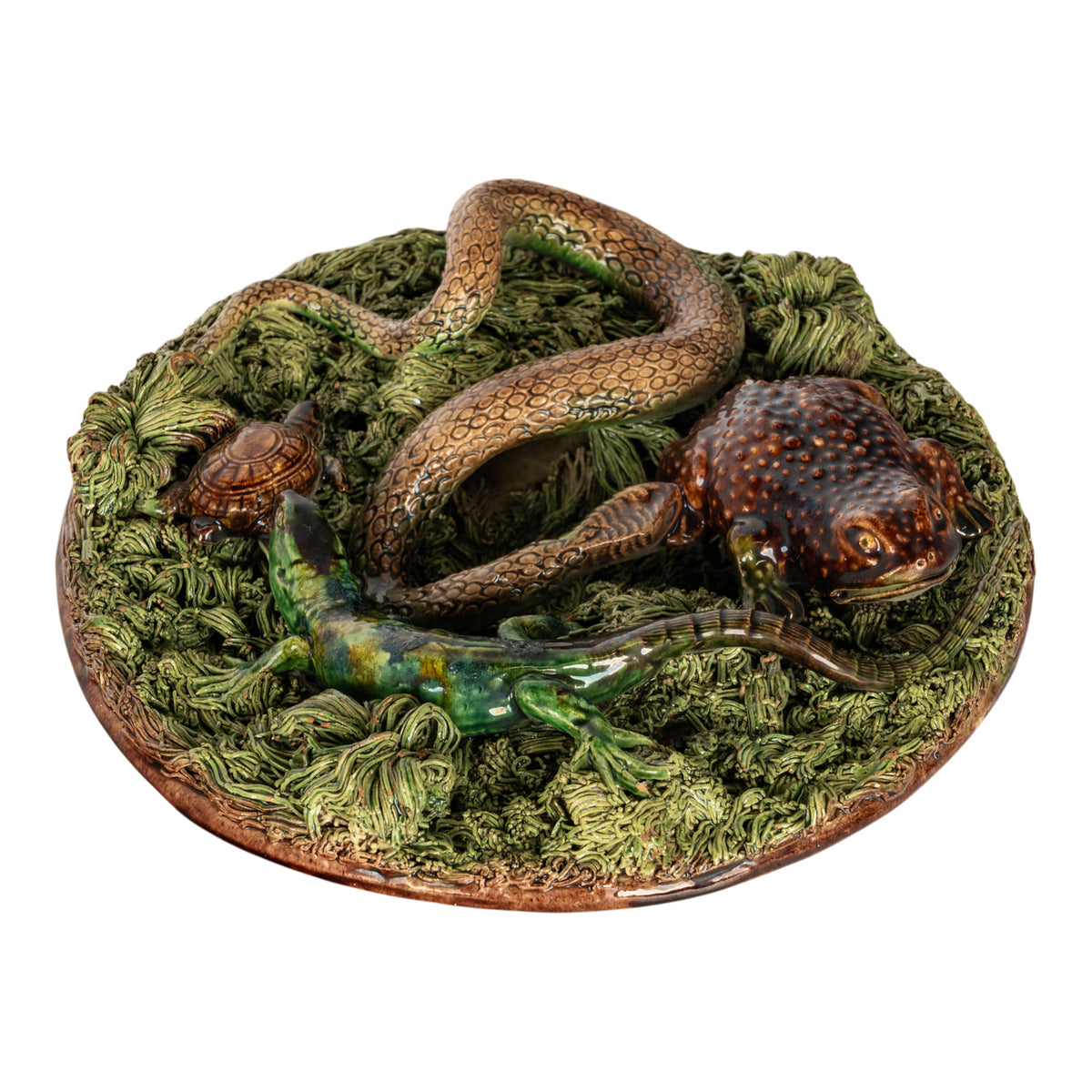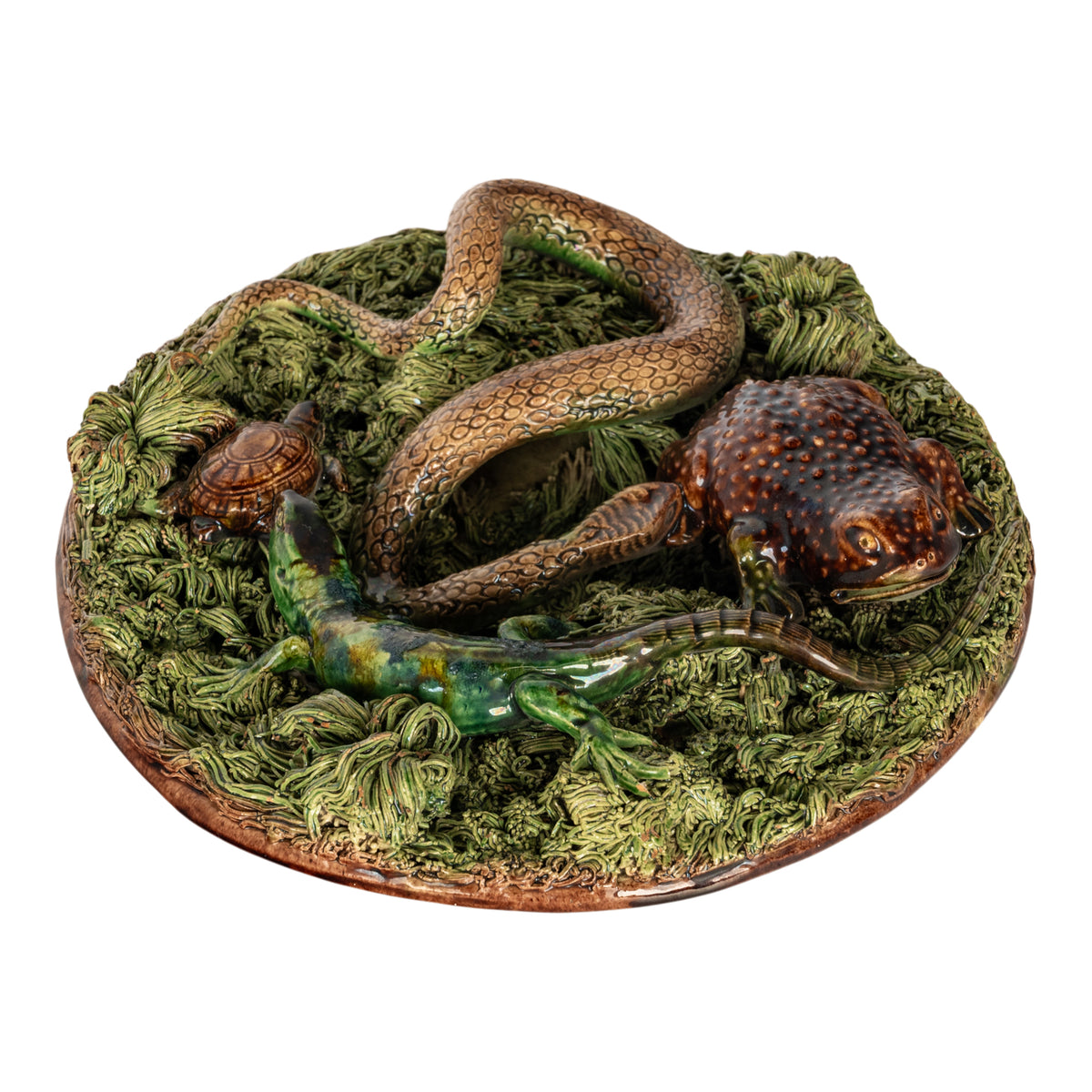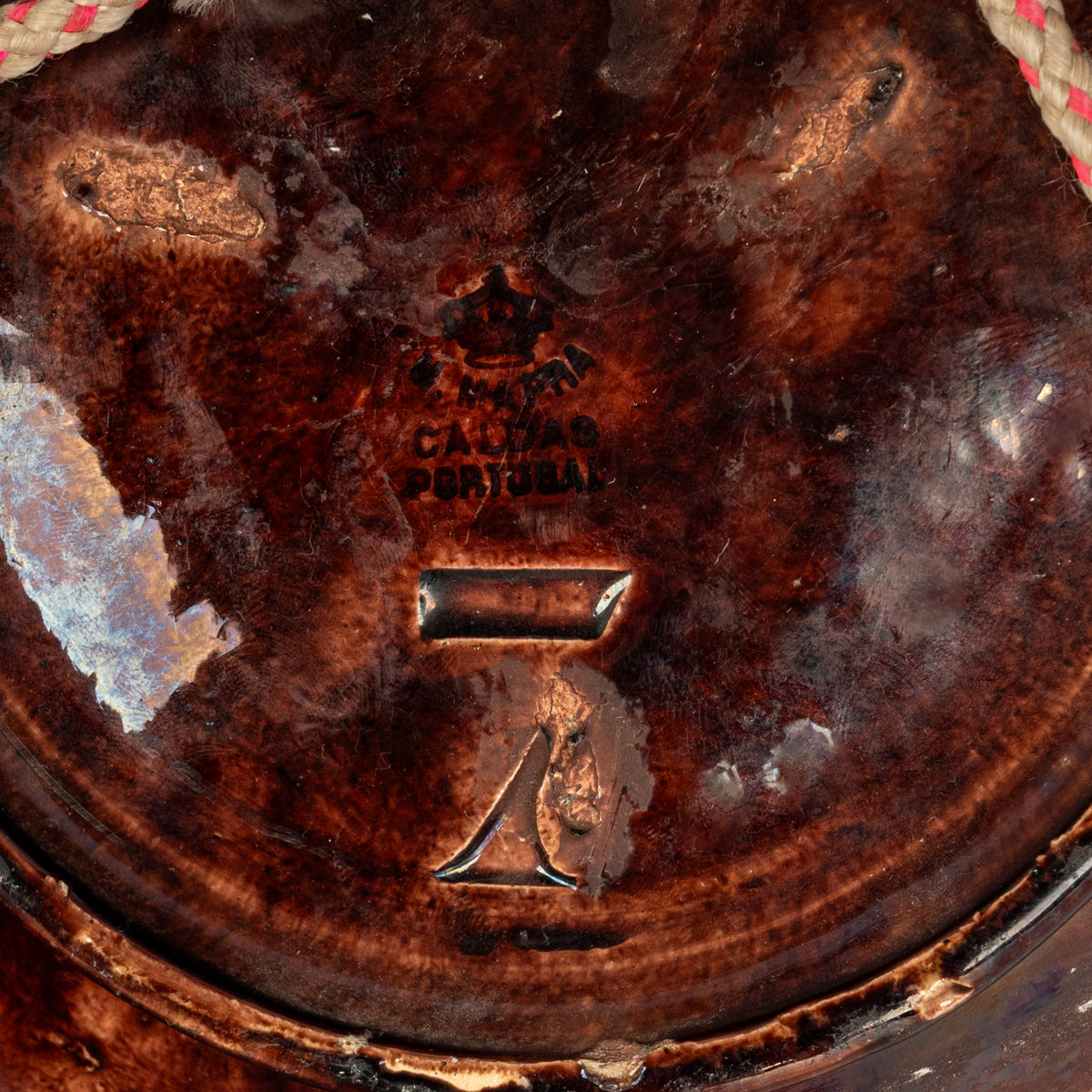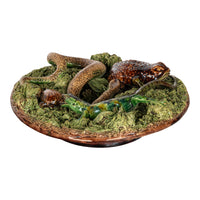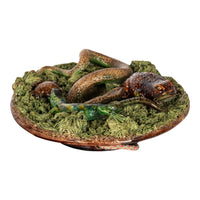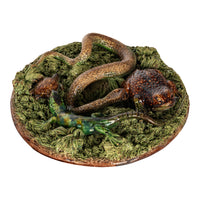Antique Palissy Ware Portuguese Mafra Majolica Pottery Plate Lizard Snake 1880
- Regular
- $ 0
- Sale
- $ 0
- Regular
- Unit Price
- per
SOLD
A fabulous large antique Palissy Ware 'grotesque' pottery majolica plate, made by Manuel Mafra (1830-1905), Portugal, Circa 1880.
The plate made in the last quarter of the 1800s by the pioneer of Palissy ware style pottery in Portugal, Manuel Mafra is credited with creating pottery made my Bernard Palissy in the 16th century and then influencing a host of other such potteries in Portugal.
This plate is typical of Mafra's work; having a rich treacle colored glaze with a background of 'moss' and modeled with three dimensional creatures, featuring a lizard, a large frog, a snake and a small turtle.
The plate with an impressed crown stamp to the verso, and "M. Mafra Cadas Portugal", the plate is in excellent condition, no damage or restoration and is ready to hang on your wall or decorate a surface.
Manuel Mafra's pottery is shown in many museums worldwide, there is a large collection featured at the Metropolitan Museum in New York.
Palissy ware is a 19th-century term for ceramics produced in the style of the famous French potter Bernard Palissy (1510-1590), who referred to his own work in the familiar manner as rustique ("in the rustic style"). It is therefore also known as rusticware. Palissy's distinctive style of polychrome lead-glazed earthenware in a sombre earth-toned palette, using naturalistic scenes of plants and animals cast from life, was much imitated by other potters both in his own lifetime and especially in the 19th century. In this revival, pottery in Palissy's style was produced by Charles-Jean Avisseau of Tours, who rediscovered Palissy's techniques in 1843, his relatives the Landais family of Tours, Georges Pull of Paris, Maurice, and Barbizet.
The number of 16th-century pieces attributed to Palissy himself is now much less than in the past, and attributions tend to be cautious, as for example: "workshop or imitator or follower of Palissy".
Portuguese Palissy ware was produced by the potteries of Mafra, Jose Alves Cunha, José Francisco de Sousa, Cezar, Herculano Elias, and Augusto Baptista de Carvalho. It is now difficult to identify which 16th-century works in the rustique manner are actually from Palissy's own workshop except by comparison with either fragments excavated in 1878 from remains of the grotto that he certainly decorated at the Tuileries Palace for Catherine de' Medici, who called him to Paris in 1566 or from excavations at the site of his Paris workshop in the Palais du Louvre. Many museums have now become cautious in their attributions.
This distinctive style of pottery is characterized by three-dimensional modeled, often aquatic, animals such as snakes, fish, lizards, frogs, and snails arranged onto large platters (wall plates, wall platters, chargers). Typically, each component is modeled and painted individually
Manuel Mafra, the Portuguese potter, born in Caldas de Rainha, Portugal, 1830–1905. At Caldas, Mafra pioneered a style of Palissy ware that featured a distinctive usage of moss as a decorative bed for fish, lizards, and insects, a style quickly adopted by other Portuguese manufacturers of Palissy ware.
Imperial
ches high × ches wide × ches deep
Metric
high × wide x deep
Displayed rates are for shipping in the Continental U.S. and Canada. For other locations, kindly contact us and we will provide the most competitive shipping price available. All shipments are professionally packed and shipped insured with full tracking capabilities. Customers are also welcome to collect their items from our warehouses or arrange their own shipping.







